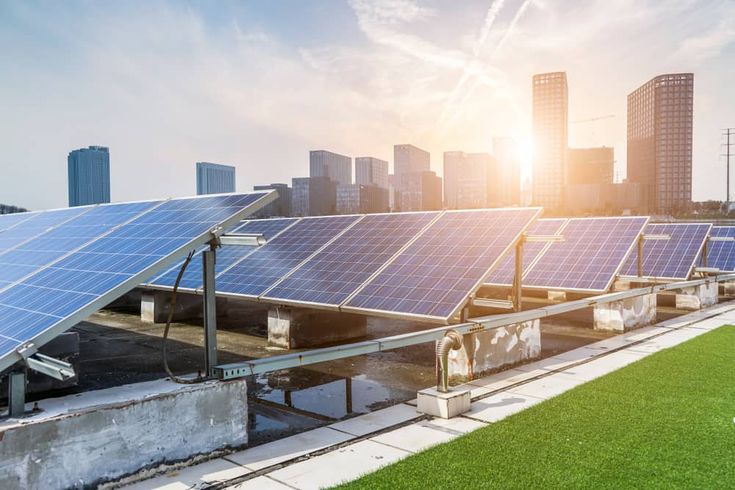Commercial solar systems are a significant long-term investment, designed to provide clean energy and substantial cost savings for decades. While these systems are known for their durability and low maintenance, proactive care is essential to ensure they operate at peak efficiency throughout their 25-30 year lifespan. Neglecting maintenance can lead to reduced energy output, longer payback periods, and potentially costly repairs. This article outlines key “Maintenance Tips for Long-Lasting Commercial Solar Panels,” guiding businesses on how to maximize their solar investment and ensure consistent performance.
1. Regular Cleaning for Optimal Performance
Dust, dirt, pollen, bird droppings, and other debris can accumulate on the surface of solar panels, blocking sunlight and significantly reducing their energy production. While rain can help wash away some grime, it’s often not sufficient for thorough cleaning, especially in urban or industrial areas.
- Frequency: The ideal cleaning frequency depends on your geographical location, local weather patterns, and the level of airborne pollutants. For most commercial systems, cleaning once or twice a year is recommended. In dusty environments or areas with heavy bird activity, more frequent cleaning might be necessary.
- Method: Use de-ionized water and a soft brush or squeegee. Avoid abrasive materials or harsh chemicals that could scratch or damage the panels. For large commercial installations, professional cleaning services with specialized equipment are often the most practical and safest option.
- Safety: Always prioritize safety. Cleaning should ideally be done by trained personnel, especially for rooftop installations, to prevent falls or damage to the system.
2. Routine Inspections and Monitoring
Even if panels appear clean, underlying issues can affect performance. Regular inspections, both visual and technical, are crucial.
- Visual Inspections (Quarterly/Bi-Annually): Look for any visible damage such as cracks in the glass, loose wiring, corrosion, or signs of pest nesting (birds, rodents) under the panels. Check for shading from new tree growth or building additions.
- Performance Monitoring (Daily/Weekly): Most modern commercial solar systems come with monitoring software that allows you to track energy production in real-time. Regularly review this data for any sudden drops in output, which could indicate a problem with a specific panel, inverter, or string. Early detection of issues can prevent significant energy losses.
- Professional Inspections (Annually): Schedule an annual inspection by a qualified solar technician. They can perform more in-depth checks, including:
- Inverter Health: Ensuring inverters are functioning correctly, as they are critical for converting DC to AC power.
- Wiring and Connections: Checking for loose connections, frayed wires, or signs of overheating.
- Mounting System Integrity: Verifying that the racking and mounting hardware are secure and free from corrosion.
- Shading Analysis Updates: Re-evaluating potential shading impacts.
3. Vegetation and Debris Management
Overgrown trees or nearby construction can create new shading issues that were not present at the time of installation.
- Tree Trimming: Regularly trim any trees or vegetation that could potentially shade your solar panels, especially during different seasons when sun angles change.
- Debris Removal: Ensure that leaves, branches, or other debris do not accumulate on or around the panels, as this can lead to hot spots and reduced efficiency.
4. Inverter Maintenance
The inverter is the “brain” of your solar system, converting the DC electricity generated by the panels into usable AC electricity.
- Ventilation: Ensure the inverter’s ventilation areas are clear and free from dust or obstructions to prevent overheating.
- Error Codes: Familiarize yourself with common error codes on your inverter’s display and know when to contact your installer or a technician.
- Firmware Updates: Periodically check if your inverter manufacturer releases firmware updates, as these can improve performance and address potential bugs.
5. Pest Control
Pests like birds and rodents can nest under solar panels, causing damage to wiring or creating fire hazards.
- Pigeon Netting/Guards: Consider installing physical barriers like pigeon netting or critter guards around the edges of your solar array to prevent pests from nesting.
- Regular Checks: Include pest activity checks during your visual inspections.
Conclusion
While commercial solar panels are robust, a proactive maintenance strategy is key to ensuring their longevity, maximizing energy output, and safeguarding your investment. Regular cleaning, routine monitoring, professional inspections, and diligent management of environmental factors will help businesses achieve the full financial and environmental benefits of their solar system for decades to come. Partnering with a reputable solar maintenance provider can simplify this process, offering peace of mind and optimal performance.

